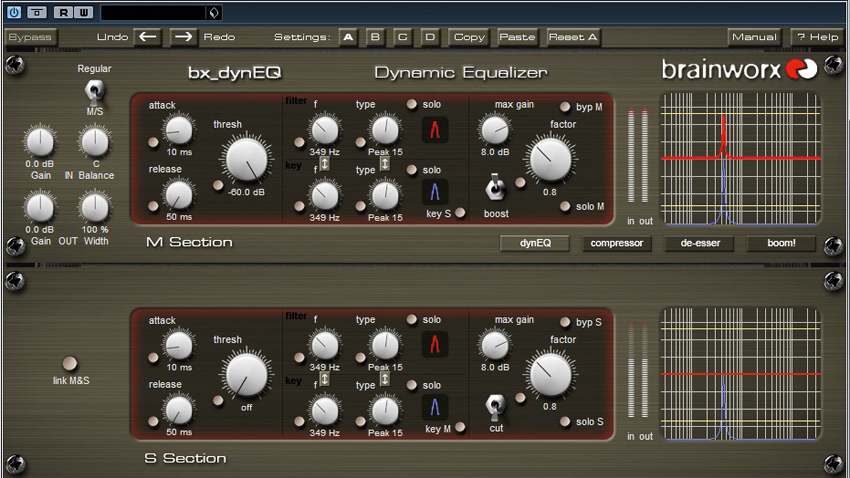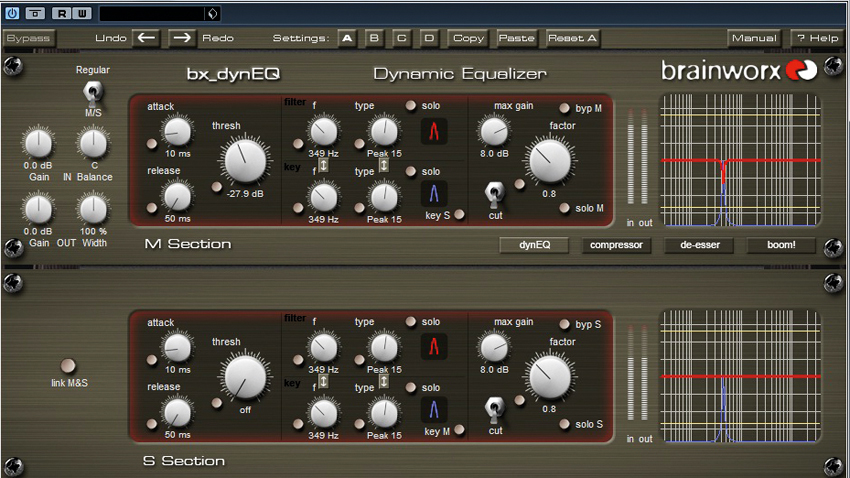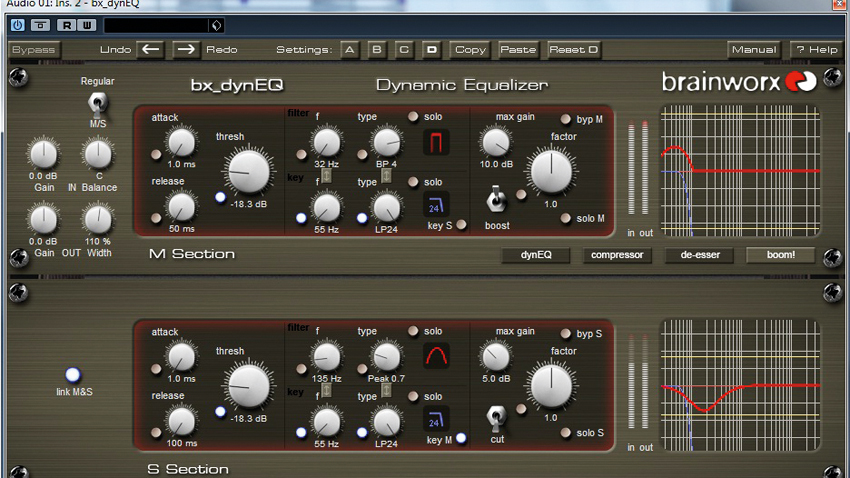FM's guide to mastering: Dynamic EQ
Understand this extremely useful mastering tool
Dynamic EQ really is a versatile and useful tool, and for many producers it can be a fantastic, and much-needed, problem solver. In short, it is a virtual processor which can be used for eliminating the shortcomings of static EQ by providing a dynamically applied equalization to your work.
It combines multiband compression and EQ, and can be a powerful tool in many ways. For example, removing problematic frequencies, boosting a weak kick drum, de-essing, or toning downa troublesome element that is causing you problems when it's playing in the song. Dynamic EQ works just like a regular static EQ, except for one important thing - you can set a compression threshold, so only when a specified frequency rangepasses over that threshold it is reduced or boosted accordingly by the desired amount.
For example, if you cut a frequency in a dynamic EQ, it won't apply that cut until the frequency crosses a threshold. This can be exceptionally usefulin toning down a hi-hat that's too loud, for instance, or for reducing the volume on a very resonant tom drum that only occurs every-so-often in your track.Let's take a second out and look at the possibilities of the dynamic EQ a little more...

1. In this song I'm using a great Mid/Side dynamic EQ from Brainworx called bx_dynEQ, and by sweeping about with an extreme boost and a narrow Q (and threshold all the way to the right), I've found that there is a problematic resonant frequency at 349Hz, and it occurs once every four bars. I'm going to remove some of this frequency, but I only want the EQ cut to occur when the sound plays.

2. I switch the EQ to 'Cut' and reset my threshold to 'off'. Then, slowly move the threshold to the right until I can see the narrow red cut begin to take action once the sound is playing. This tells me I'm targeting the right frequency, as it only seems to spring into action once the sound is playing, and when the sound isn't playing there is no movement at all. I've successfully targeted a specific frequency that was a little overbearing.

3. However, in this next image, I've done the opposite and used the dynamic EQ as an expander, and boosted the sub in the kick drum every time it plays, while also sucking out some of the bass in the sides each timethe kick hits. This only springs into action when the kick crosses the threshold, so it's not the same as using a standard static EQ to simply boost the low-end, as it is specific to parts of the song where the kick is in action.
Get the MusicRadar Newsletter
Want all the hottest music and gear news, reviews, deals, features and more, direct to your inbox? Sign up here.
Future Music is the number one magazine for today's producers. Packed with technique and technology we'll help you make great new music. All-access artist interviews, in-depth gear reviews, essential production tutorials and much more. Every marvellous monthly edition features reliable reviews of the latest and greatest hardware and software technology and techniques, unparalleled advice, in-depth interviews, sensational free samples and so much more to improve the experience and outcome of your music-making.
“From a music production perspective, I really like a lot of what Equinox is capable of – it’s a shame it's priced for the post-production market”: iZotope Equinox review
"This is the amp that defined what electric guitar sounds like": Universal Audio releases its UAFX Woodrow '55 pedal as a plugin, putting an "American classic" in your DAW










